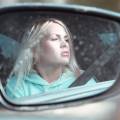Hit-and-Run OCD vs. Other Driving Fears

Hit-and-run OCD can be distinguished from other driving-related fears on the basis of a person’s core fear and his/her response to it.
What is hit-and-run OCD?
Hit-and-run OCD (sometimes called MVA-OCD) is a subtype of obsessive-compulsive disorder that involves persistent and recurrent worries that you’ve hit someone while driving. While most people with hit-and-run OCD worry, “What if I accidentally hit a pedestrian?”, some worry about unintentionally causing car accidents, bike accidents, or property damage.
Hit-and-run OCD is frequently misdiagnosed as panic disorder given that many people with panic disorder (with agoraphobia) also report a fear of driving. However, hit-and-run OCD and panic disorder are distinct conditions that may often be differentiated on the basis of their core fears.
Driving Fears Related to Panic Disorder (with Agoraphobia)
For someone who has panic disorder with agoraphobia, driving fears might arise because:
- Driving may have been associated with panic attacks in the past. Some people with panic disorder have a history of having had panic attacks while on the road and they’re fearful of this happening again.
- If you’re in the car and have a panic attack, escape isn’t easy. You may be fearful of getting trapped in your car while your anxiety escalates. Some people with panic also fear the potential for embarrassment if they panic in public.
- Panic disorder with agoraphobia is also associated with the fear of being vulnerable and helpless to anxiety or panic.
In essence, panic disorder involves the fear of panic itself. In fact, panic disorder is often described as the “fear of fear.” Many people with panic tend to misinterpret the physical sensations of anxiety and panic as dangerous (e.g., “What if my chest pain means that I’m having a heart attack?”, “What if my racing thoughts mean that I’m going crazy?”). These fears (e.g., the fear of dying, the fear of going crazy) are fairly distinct from the obsessions that characterize hit-and-run OCD.
Driving Fears Related to Hit-and-Run OCD
Although people with hit-and-run OCD may experience panic attacks while driving, these panic attacks themselves are not fundamental to their anxiety. Instead, panic is a byproduct of the person’s anxiety related to their underlying OCD fears. Hit-and-run obsessions often involve fear or uncertainty about the possibility of having caused harm to others (e.g., “What if I hit someone with my car?”, “What if I drove carelessly and caused an accident?”). In that way, OCD-related panic is obsession-driven.
While both panic disorder and hit-and-run OCD may be associated with driving avoidance, OCD is distinctly associated with a variety of behavioral and mental compulsions, which are not typically present in panic disorder. People with OCD may engage in a variety of physical or mental checking behaviors when driving. They may make excessive use of mirrors or visual checks to make sure that they haven’t hit someone or caused an accident. They may retrace their driving routes to scan for signs of an accident. They might also check the news for stories about car accidents or hit-and-run incidents, or check their own vehicles for signs of damage that their car may have been involved in an accident. Beyond these overt checks, people with hit-and-run OCD may engage in mental review, such as mentally replaying their drive home to make sure that nothing bad happened. At first these checks may be minimal and may take only a few minutes to complete. However, if these compulsions aren’t addressed, they may grow into complex, time-consuming rituals that may take up many hours per day.
The distress associated with these rituals can be so intense that the person may begin placing restrictions on their driving. They may drive only when necessary and restrict their driving to familiar roads and familiar places. They may avoid driving at night, avoid busy intersections or highways, or avoid roads that pass by schools, shopping areas, or construction zones (i.e., any places that might have ample numbers of pedestrians). They may also ask close friends or family members to drive them places or complete errands for them.
Hit-and-run OCD can quickly become debilitating, and it can result in significant job-related impairment. Moreover, some individuals become so disheartened by their symptoms that they quit their jobs. Many of the individuals I treat in my West Palm Beach psychological practice are initially disabled due to their inability to drive to work or (even) therapy.
Because this type of OCD is highly treatable through exposure and response prevention (ERP), giving up on overcoming your hit-and-run OCD is especially tragic. You really can overcome your driving fears.
Effective treatment for hit-and-run OCD occurs primarily outside of the office — on roads. Consequently, you should find a local therapist who is willing to leave the office and implement the types of in vivo exposures that are most effective for reducing hit-and-run OCD symptoms.
ERP for hit-and-run OCD involves confronting anxiety head-on through in vivo and imaginal exposures. People with hit-and-run OCD will need to take to the road with their therapists and do a variety of therapeutic exercises designed to confront and reduce their driving-related fears. They will initially construct a driving-related hierarchy that may include:
ERP for Hit-and-Run OCD: Exposure Ideas
- Driving at various times of the day, including driving at night, as well as driving during the day.
- Driving in areas that are either unoccupied OR are full of pedestrians, such as construction areas or driving past schools.
- Driving in remote places OR driving in busy parking lots, including mall parking lots that have many pedestrians.
- Driving on roads that include bike lanes.
- Driving on highways or busy roads that involve merging into traffic.
- Making right-hand turns on red, which can be especially triggering if there are pedestrians or other vehicles present.
- Practicing parking (backing in and backing out) in empty OR busy parking lots.
- Driving with “normal” distractions, such as driving while listening to the radio.
Initially, you and your therapist will assemble a list of triggering driving scenarios and rank them 0-10 in terms of anticipated anxiety/distress. Individuals will usually begin with driving exposures that are ranked as “2’s” or “3’s” on their scale and then systematically progress up the hierarchy. Exposures should be repeated frequently, under many different types of circumstances.
Some high level driving exposures may initially be completed with a “driving buddy” before you progress to doing these exposures independently. Your “driving buddy” may be your therapist, but it could also be a trusted friend or family member. It’s important that this person refrains from giving you reassurance while you drive. As you progress, your “driving buddy” should become less and less involved in your exposures.
Sometimes an intermediary step of fading out your driving buddy involves driving with your buddy while they close their eyes or wear a blindfold. This gives you the benefit of still having them there for moral support (NOT REASSURANCE SEEKING), while learning to rely solely on your own perceptions of the road. This is important because some people with hit-and-run OCD feel reassured simply by having another pair of eyes present. This is because the person with hit-and-run OCD may believe that if anything bad truly did happen, their driving buddy would surely have noticed it and mentioned it.
Avoidance is a core component of hit-and-run OCD, so driving itself will be one of the most important elements of effective treatment. However, exposure to triggering situations via imaginal exposure will also be key to achieving a lasting recovery. Scripting (imaginal exposure) is a core component of effective OCD treatment, as is using the right type of video-based exposures. These treatment strategies may include watching youtube videos of triggering traffic situations or hit-and-run accidents.
If you have hit-and-run OCD, there is much reason for hope. Find a local hit-and-run OCD specialist who can guide you in ERP for OCD, and you’ll soon find yourself taking to the road with newfound confidence.
Questions? Comments? Have a recovery story about hit-and-run OCD you’d like to share? What exposures have been instrumental in your recovery? Please sound off below!
Want Updates about New Content?
Follow Me!
Follow @drstevenseay












Great post! Reading it, I couldn’t help thinking how important it is to have a therapist who understands OCD and specializes in treating it because, as you say, it can often mimic other disorders and even be misdiagnosed. Hit-and Run OCD is a good example of this. I’m sure this post will help a lot of people.
Thanks for reading, Janet! It’s very much like “emetophobia” in that way. Emetophobia (the fear of vomiting) often represents hidden OCD or panic disorder, but it’s often not perceived that way, which can affect the outcome of treatment.
Thank you much for posting this. I thought I was totally alone in my fear of driving. in my case I use to drive everywhere. I had an accident in 2004, and led me to stop driving completely. I think the last time I drive myself anywhere is in 2010. I didn’t know that I could possibly be suffering from OCD until I visited your site. Now I that I know what my condition is I can get help and resume living independently.
Glad the information helped! Good luck in your recovery! 🙂
While riding bike and driving car I feel like I have harmed persons or animals moving around the road.. I take so much of time rechecking and thinking about it unless I got assured
That sounds rough, Sandy. Overcoming hit-and-run OCD involves resisting rituals and accepting uncertainty about your feared consequences. It’s not easy, but it can make a huge impact on your quality of life. You can do it!
Hi. Steven, which one is a safety behaviour in Hit-and-Run OCD? Is it driving with a buddy?, Driving slowly? Repeated checking rearview mirror? Or Circling back to where you already drove pass? Are safety seeking behaviour the same as compulsions?